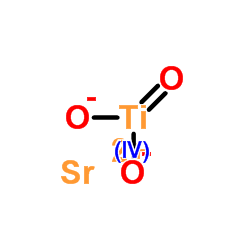| Structure | Name/CAS No. | Articles |
|---|---|---|
 |
Barium titanate
CAS:12047-27-7 |
|
 |
Strontium dioxido(oxo)titanium
CAS:12060-59-2 |